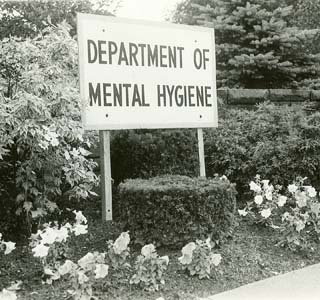Public Hostage: Public Ransom – Inside Institutional America
Chapter One: Social Control Origins (Continued)
Willowbrook's first superintendent and director was Dr. Harold Berman, appointed in 1949. The years 1947 through 1951 were formative ones during which Willowbrook was staffed, organized, equipped and programmed to serve some 3,000 persons. The essential clinical, educational, and support facilities were initiated. By 1952, admissions began to outnumber transfers.
The population continued to increase rapidly. In 1954, Willowbrook was first counted in the "overcrowded" column, where it still remains. (Also in 1954, a school building was activated. This "educational" facility accommodated fewer than 200 youngsters.)
In the face of this expansion, the state Department of Mental Hygiene gradually increased the number of "allowable" residents, with the effect that the apparent number of excess people reported was misleading. From 1954 on, the overcrowding officially varied from 406 to 1,811 people, but this was over and above the expanded tolerable ceiling which had reached 4,726 by 1971, from the early 3,000 figure. In fact, during the ten years between 1954 and 1964, Willowbrook continued to admit residents until 6,084 persons, a high-water mark, was reached in 1963. The staggering overcrowding led to a public health crisis. Hepatitis, the deadly viral liver disease, was epidemic, as were a dozen other tropical parasitic diseases and illnesses directly related to the environmental conditions.


It was during this period that Dr. Saul Krugman, of New York University School of Medicine, entered the scene to take advantage of the situation to do research on hepatitis. Arrangements to obtain Army money to carry on the work were carefully made, so as to sidestep the stringent requirements set up to safeguard against abuses in human experimentation. As a result of the terrible conditions, the disease research, and the toll they both were taking, the situation became explosive. Dr. Berman stepped down under public pressure, and Dr. Jack Hammond became Willowbrook's second superintendent and director in July, 1964.
Hammond had been groomed for directorship at Rose State School, a similarly glutted institution in upstate New York. The political pressure was on to reduce the population and to bring some reforms. The physical plant was expanded with a 200-bed infirmary, a children's complex for 1,000 residents, and a small physical rehabilitation unit for people with physical disabilities.
A federal demonstration grant was obtained to erect two prefab complexes for 300 more children. Admissions were stopped for a short time and then opened to any family willing to submit their child to hepatitis research as a means of circumventing the waiting list. (This infamy was documented in a Channel 13 educational TV film made in 1972, which was suppressed before it could be shown.)
Despite all these efforts, the lid blew off the following year in a media exposé. Senator Robert Kennedy visited September 1, 1965. He came, briefly saw "the good and the bad", and propelled Willowbrook into national prominence and visibility. Some staff were added, notably in the occupational and recreation therapy departments. But things quickly went back to business as usual, since there was no community organization or even a solid alternative ideology to the institutionalization in existence.
